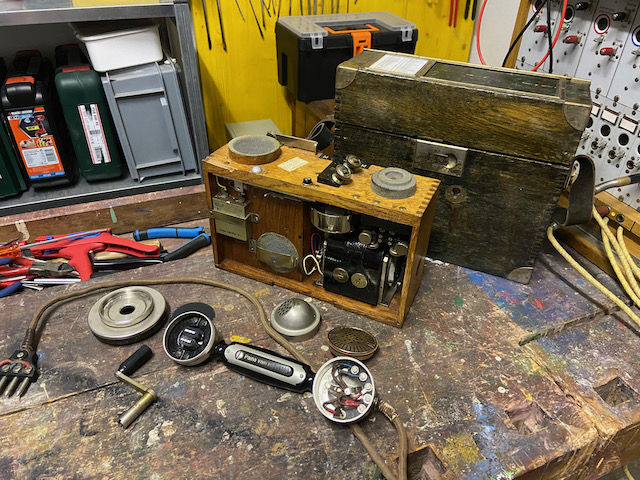
Made for the Finnish army by Tartu Telefoni Vabrik (Estonia, then local subsidiary of Ericsson) from the late 20ies to the late 30ies. The telephone is a full wood box and body/frame construction. The electrical setup uses an "english" buzzer setup where the buzzer and transmission coils are shared. After WWII the buzzer was disabled and the battery compartment adapted to take standard D-Cells, the instrument was then in active use up to the 60ies. It was decommissioned in the 80ies [1].
There were four models differing in the case size and color and a slightly different handset size. The earlier models are slightly larger and nicknamed "keltainen" (yellow) because of their yellowish paint and the later models are nicknamed "vihreä" (green) because of their more greenish paint. The other difference is the type of lid, the normal model has a straight lid whereas the navy model has a diagonal cut lid allowing to open the instrument even when hang on a wall. The newer models also have notches in the front to take up an external dial unit (VPAYT).
| Description | P type | V type | Lid type | Size |
|---|---|---|---|---|
| Old yellow | P-1-8 | VPATA | Straight | 255x290x120 |
| Old yellow, navy | P-1-8M | VPATAB | Diagonal | 255x290x120 |
| New green | P-1-8U | VPAT | Straight | 235x280x105 |
| New green, navy | P-1-8UM | VPATB | Diagonal | 235x280x105 |
The here presented model is a later navy model (P-1-8UM, VPATB). It has been refurbished by the Finnish army repairshop (VKeskKmo) after WWII where the buzzer function was disabled and a wood tray to take two standard D-Cells was inserted in the battery compartment. The capacitor from 1938 is made by "Ludwig Baugatz" (LB, Germany, according to a catalog from 1927 LB was a standard capacitor supplier for Tartu [3]).
This field telephone type is still mentioned in the Finnish signal corps handbook from 1962 [2] (Google translated):
Estonian field telephones VPAT and VPATA: These telephones have already been removed from the equipment but are still used for special purposes. The phone is in a sturdy oak case and weight approx. 6.5kg.
Screws which hold body in box can be opened without tools just using two fingers. A clamp to hold a spare TX capsule is mounted on the inside.
Disassembled.

Ready top use.
The top lid is hold by a foldable lever in the back (visible behind the handset TX side).
The "Tr" button front middle is the line test button.
On the front there are some clip in holes maybe to add an optional dial unit or for some similar use.
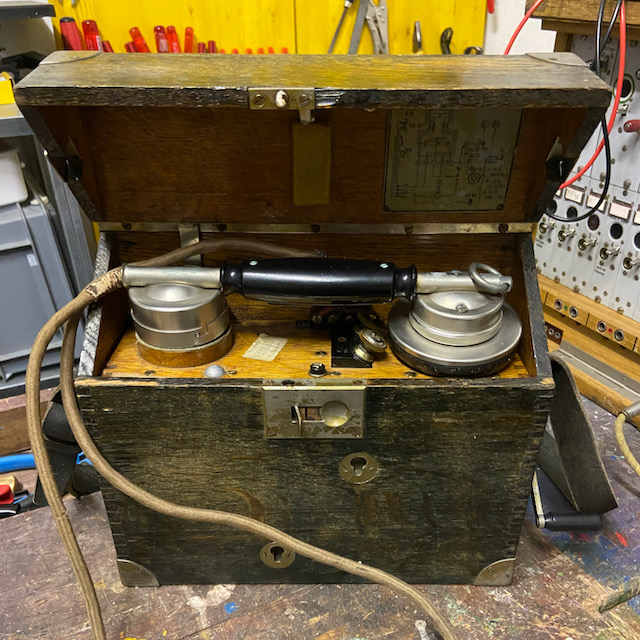
The diagram indicates make (Tartu Telefoni Vabrik) and model (P-1-8).

The capacitor may indicate the original manufacturing date of 1938.
The instrument has been refurbished post WWII, probably al wires have been replaced then as they look newer than from the 30ies.
The buzzer function has been disabled at refurbishing, but the buzzer coil has been left as it is used as transmission coil aswell.
In the front there is space and a latch to hold a spare TX element.
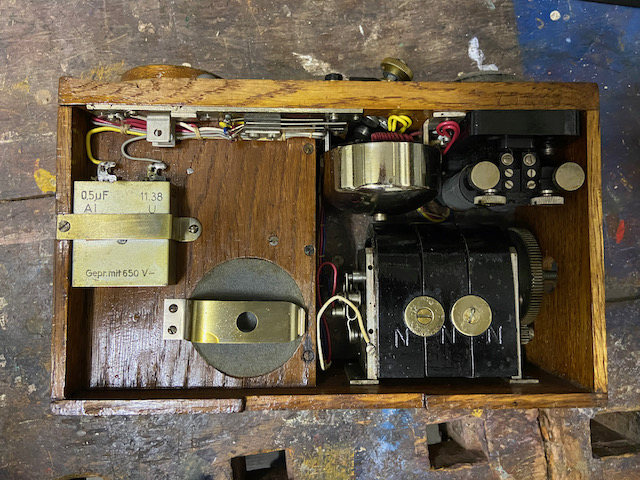
The foldable lever on the right holds the lid open when telephone in use.

The battery compartment did hold some format of box cells originally.
At refurbishment a wooden inlet to use D-Cells was installed.

The empty oak box with the magneto crank handle holder and diagram in the lid.

All components ready to store.
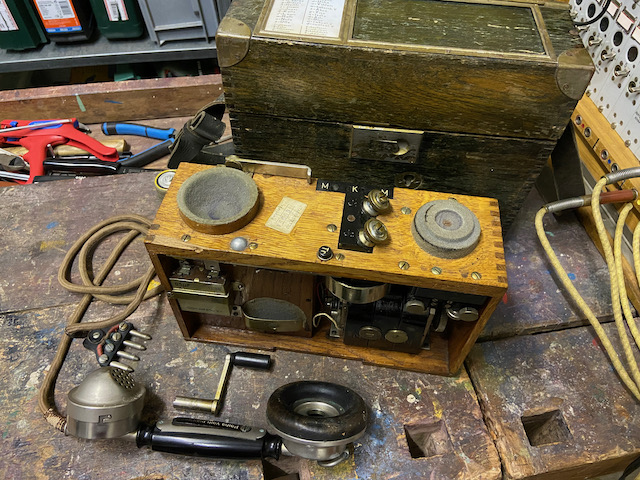
All neatly stored.

Ready for transport.
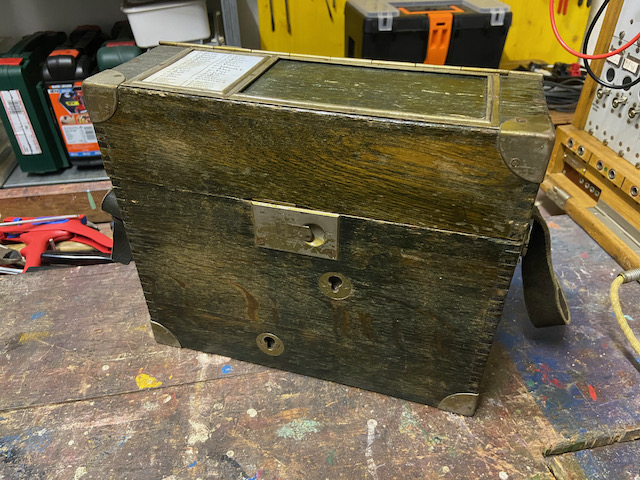
Spelling alphabet on top (Self made replica).
The holder on top provides additional space probably for user instructions or similar.
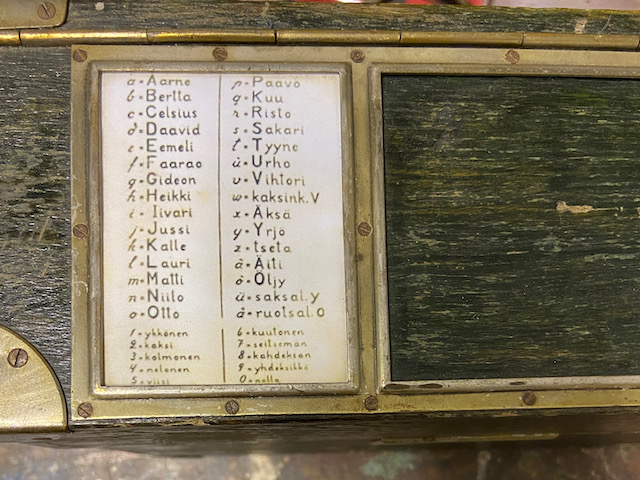
Refurbishing label.
"Tarkastettu" = Checked.
VKeskKmo is the name of the finnish army signal corps repair shop.
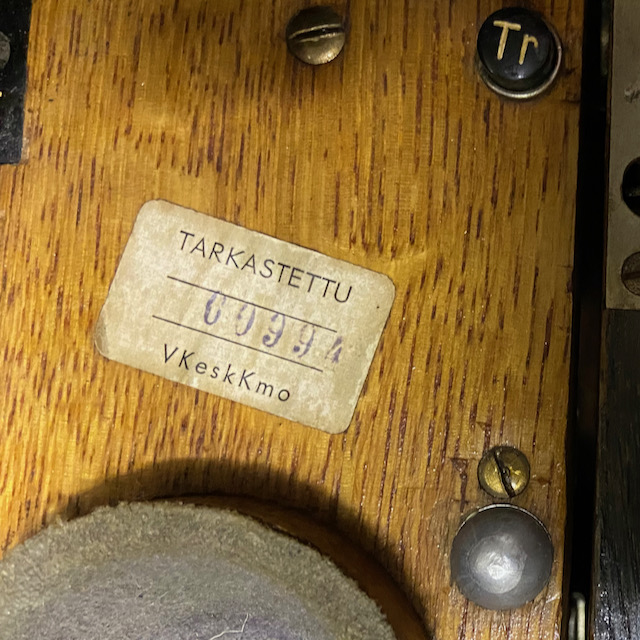
The screws on the bottom can be opened using two fingers, no tools required.
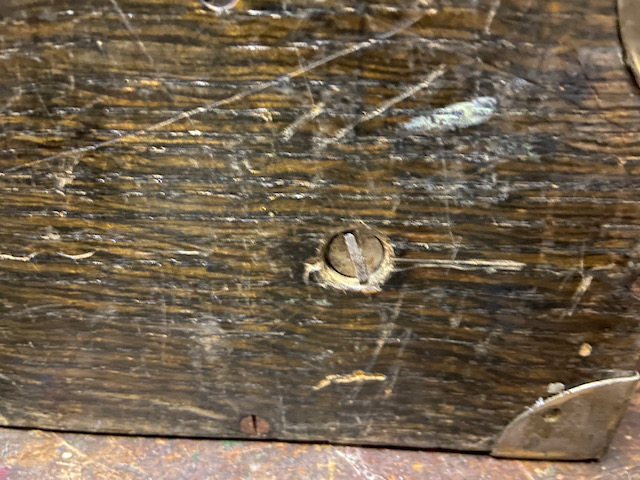
There are hangers mounted to the back of the box.
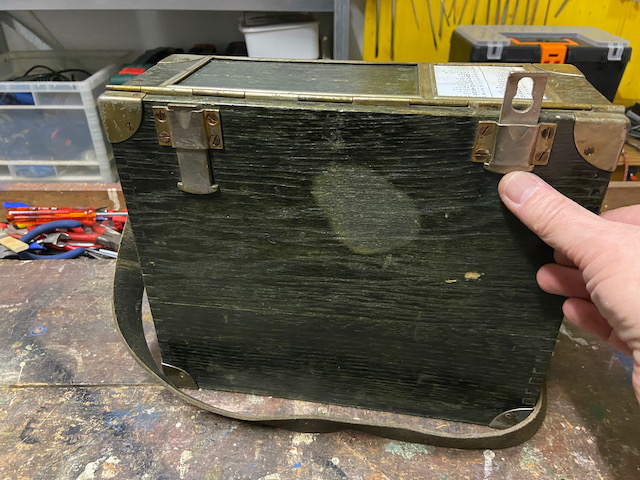
Creative Commons Attribution-ShareAlike 4.0 International License